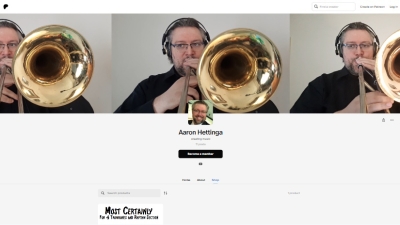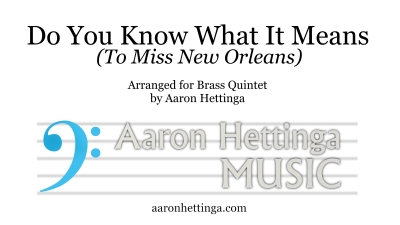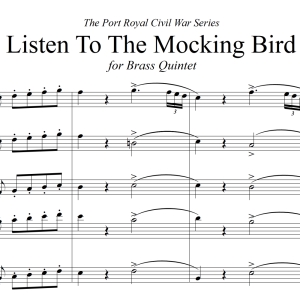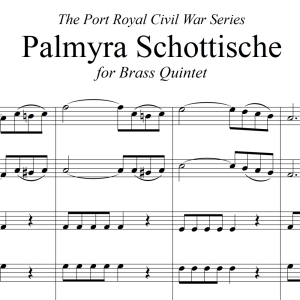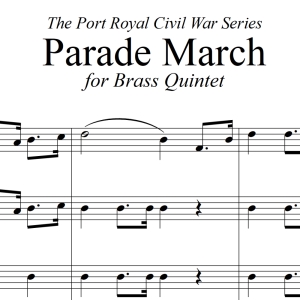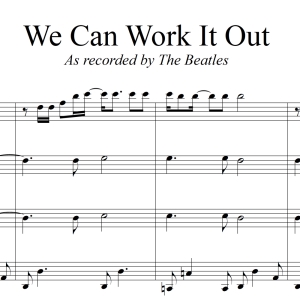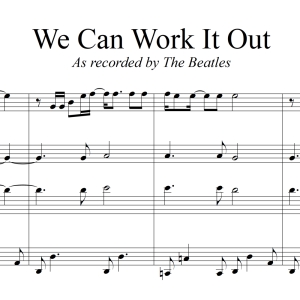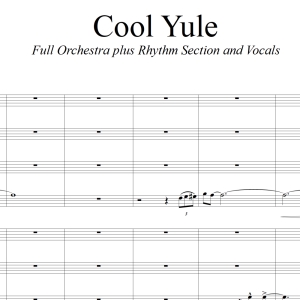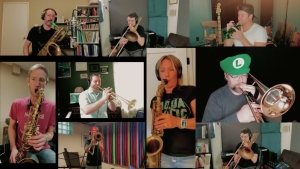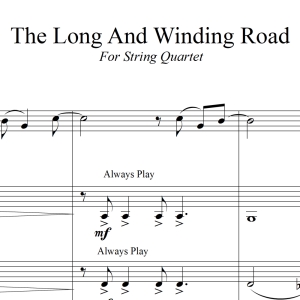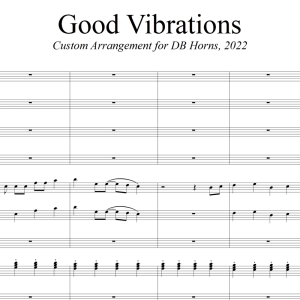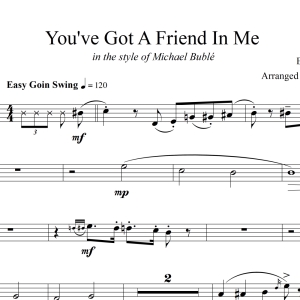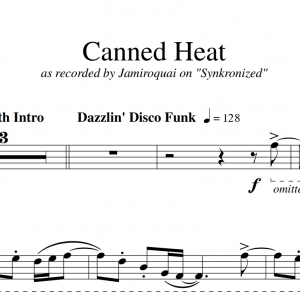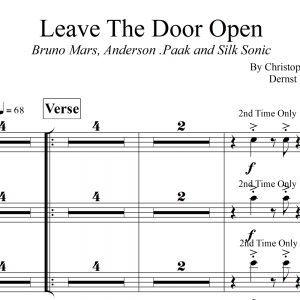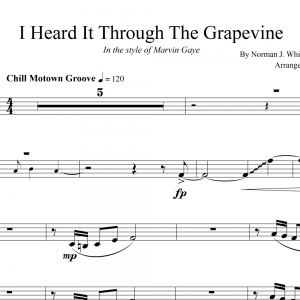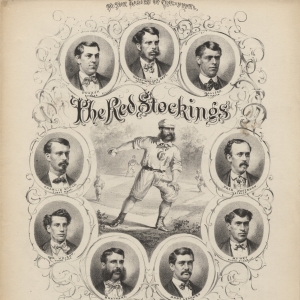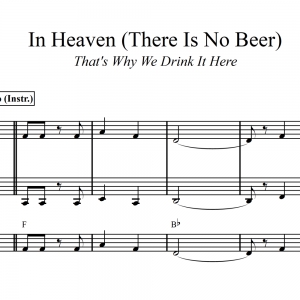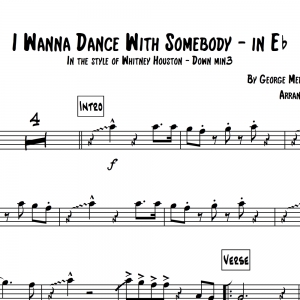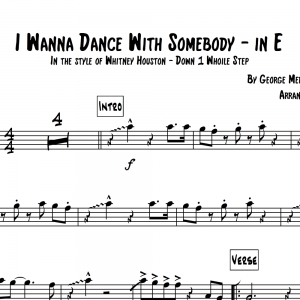
Aaron Hettinga
This Multi-pack of three arrangements includes the following titles:
Performance notes: For all entries in the Port Royal Civil War Brass Quintet series, it’s recommended to utilize instruments such as Cornets and Euphonium in place of the Trumpet and Trombone parts to more faithfully emulate the sounds of the conical-bore instruments of the period. Extra sets of 1st Trumpet parts are included, transposed for use with Eb Tpt or Bb Piccolo Tpt instead if desired.
These arrangements are a great opportunity to incorporate music from the American Civil War era into your Brass Quintet’s repertoire.
Richard Milburn was a 19th-century African-American composer and barber who wrote the melody for “Listen to the Mocking Bird” which was later set to lyrics by Alice Hawthorne, also known as Septimus Winner (1827 – 1902). The song’s extreme popularity led Gustavus Washington Ingalls (1824-1903) as bandmaster for New Hampshire’s 3th Regimental band (also known as the Port Royal Band), to contribute a spirited arrangement of Milburn’s melody for the Port Royal band books used during the American Civil War.
Originally #47 in the Port Royal Band Books, “Mocking Bird” is presented here in an arrangement for Brass Quintet. All of the parts contain some technical passages that may prove a challenge for less experienced players, not just as some 16th note phrases for the Trombone, but also some fairly challenging imitative “chirping” sounds for the trumpet and horn. The 1st trumpet part also spends significant time in a higher tessitura with little opportunity for rest, which is why some additional transpositions are provided in this package.
Performance notes: For all entries in the Port Royal Civil War Brass Quintet series, it’s recommended to utilize instruments such as Cornets and Euphonium in place of the Trumpet and Trombone parts to more faithfully emulate the sounds of the conical-bore instruments of the period. Extra sets of 1st Trumpet parts are included, transposed for use with Eb Tpt or Bb Piccolo Tpt instead if desired.
This arrangement is a great opportunity to incorporate historical music from the American Civil War era as well as works from composers of color into your Brass Quintet’s repertoire.
Also available as part of the Port Royal Civil War Series for Brass Quintet - 3-Pack
Composer Claudio S. Grafulla (1810-1880) was bandmaster for New York’s 7th Regimental band and became one of the key contributors of pieces for the Port Royal Band Books used during the American Civil War. Graffulla was responsible for the introduction at the front of J.P. Rowbotham’s “Palmyra Schottische” composition, originally #45 in the Port Royal Band Books, which is presented here in an arrangement for Brass Quintet.
This arrangement carries forward the flavor of this charming piece, though it may take players of at least moderate ability to pull it off. The 1st trumpet and horn parts pose the greater technical challenge, and the first trumpet part spends much time in a higher tessitura with little opportunity for rest, which is why some additional transpositions are provided in this package. The cadenza can be taken ad lib as only the first pitch and the last 3 eighth notes in this part were in the original handwritten manuscript.
Performance notes: For all entries in the Port Royal Civil War Brass Quintet series, it’s recommended to utilize instruments such as Cornets and Euphonium in place of the Trumpet and Trombone parts to more faithfully emulate the sounds of the conical-bore instruments of the period. Extra sets of 1st Trumpet parts are included, transposed for use with Eb Tpt or Bb Piccolo Tpt instead if desired.
These arrangements are a great opportunity to incorporate music from the American Civil War era into your Brass Quintet’s repertoire.
Also available as part of the Port Royal Civil War Series for Brass Quintet - 3-Pack
Composer Claudio S. Grafulla (1810-1880) was bandmaster for New York’s 7th Regimental band and became one of the key contributors of pieces for the Port Royal Band Books used during the American Civil War.
His “Parade March or Troop” composition, originally #13 in the Port Royal Band Books, is presented here in an arrangement for Brass Quintet. All of the parts are relatively accessible to players of even moderate ability, though the 1st trumpet part spends some time in a higher tessitura with little opportunity for rest which is why some additional transpositions are provided in this package.
Performance notes: For all entries in the Port Royal Civil War Brass Quintet series, it’s recommended to utilize instruments such as Cornets and Euphonium in place of the Trumpet and Trombone parts to more faithfully emulate the sounds of the conical-bore instruments of the period. Extra sets of 1st Trumpet parts are included, transposed for use with Eb Tpt or Bb Piccolo Tpt instead if desired.
These arrangements are a great opportunity to incorporate music from the American Civil War era into your Brass Quintet’s repertoire.
Also available as part of the Port Royal Civil War Series for Brass Quintet - 3-Pack
For modern-day adults who grew up in the 1970’s and 1980’s, The Muppet Show marks a memorable and influential portion of their childhoods. This arrangement brings back all of those nostalgic memories by delivering that inimitable theme song with the energetic use of a Saxophone Quintet.
In performance, this arrangement will reward the exaggerated use of dynamics. Every instrumental part gets its turn with the melody, but it’s important for the other players to stay out of the way of the lead. Since the tempo moves along at a pretty rapid clip, it’s also important to play lightly to not get bogged down and muddy during any of the technical passages.
Other than a Soprano Sax part that briefly ascends to a written high “D” outside of the Alto Sax range, a substitute part for Alto sax is included that is identical other than it takes that phrase down an octave. The Bari Sax part is not unreasonably different from your average bari part, but there are a number of featured moments…the exposed note in measure 9 should be played to the bari-saxiest!
This will make a fine addition to a sax quintet’s book for a nostalgia or novelty set!
Also available for Brass Quintet
For modern-day adults who grew up in the 1970’s and 1980’s, The Muppet Show marks a memorable and influential portion of their childhoods. This arrangement brings back all of those nostalgic memories by delivering that inimitable theme song with the energetic use of a Brass Quintet.
In performance, this arrangement will reward the exaggerated use of dynamics. Every instrumental part gets its turn with the melody, but it’s important for the other players to stay out of the way of the lead. Since the tempo moves along at a pretty rapid clip, it’s also important to play lightly to not get bogged down and muddy during any of the technical passages. As a fun option, your trumpet players could optionally play their first page on solotone mutes.
Other than a 1st trumpet part that briefly ascends to a written high “D” (which could be played down an octave), none of the other parts should pose much of a range challenge for even young players. The Tuba part is not unreasonably different from your average tuba part, but there are a number of featured moments…the exposed note in measure 9 should be played to the bari-saxiest!
This will make a fine addition to a brass quintet’s book for a nostalgia or novelty set!
This Beatles classic makes for a nice little tune for unaccompanied Trombone quartet The form and key of the original recording is closely followed but has been crafted to function with a standalone ensemble without vocals or percussion.
Performance options: If this feels as though it is going on a little long for the available performance time, taking the Coda during the repeat rather than the DS should trim off enough to make for a still complete performance of the song without taking as much time..
Other than a 1st trombone part that spends some time around a written high A, none of the parts should pose much of a technique or range challenge for even young players. The Bass Trombone part could also be handled well on Tuba.
This will make a fine addition to a Beatles tribute set.
"We Can Work It Out" is available for:
This Beatles classic makes for a nice little tune for unaccompanied Brass quartet The form and key of the original recording is closely followed but has been crafted to function with a standalone ensemble without vocals or percussion.
Performance options: If this feels as though it is going on a little long for the available performance time, taking the Coda during the repeat rather than the DS should trim off enough to make for a still complete performance of the song without taking as much time..
Other than a 1st trumpet part that spends some time around a written high B, none of the parts should pose much of a technique or range challenge for even young players. The 2nd Trombone part would likely be handled best on Bass Trombone or Tuba.
This will make a fine addition to a Beatles tribute set.
"We Can Work It Out" is available for:
Herb Alpert’s endearing take on this 60’s standard from his “Whipped Cream and Other Delights” album is presented here for 2 Trumpets, Trombone, and Rhythm section. This chart gives an instrumental ensemble the opportunity to perform “A Taste of Honey” while observing the original key and form of the classic recording. For the final pass through the melody, the key shifts up a half-step to F# minor which can be a bit challenging to players with less experience.
The Trumpets and Trombone parts closely follow in the footsteps of the original recording, making this a good vehicle to showcase a talented trumpeter or two. As the original recording is often double-tracked, both trumpet parts contain the full notation of the lead/solos so you can distribute these among your players either as featured solos or as unison duets. The Piano, Bass, and Drum Set parts are all fully notated.
Other than the challenges for the featured trumpeter(s) and the tonality of F# minor, this arrangement should otherwise remain fairly unchallenging and should be well within the grasp of younger ensembles as long as they are reminded to keep a close eye on the key signature!
A great way to add some Tijuana Brass-styled 60’s sunshine onto your program!
Also availble for Small Big Band
Herb Alpert’s endearing take on this 60’s standard from his “Whipped Cream and Other Delights” album is presented here for a Small Big Band of 4 saxes, 3 brass, plus Rhythm section. This chart gives an instrumental ensemble the opportunity to perform “A Taste of Honey” while observing the original key and form of the classic recording. For the final pass through the melody, the key shifts up a half-step to F# minor which can be a bit challenging to players with less experience.
The Trumpets and Trombone parts closely follow in the footsteps of the original recording, making this a good vehicle to showcase a talented trumpeter or two. As the original recording is often double-tracked, both trumpet parts contain the full notation of the lead/solos so you can distribute these among your players either as featured solos or as unison duets. In addition, there are some ensemble saxophone backgrounds added that bring extra texture to the original complement of players. The Piano, Bass, and Drum Set parts are all fully notated.
Other than the challenges for the featured trumpeter(s) and the tonality of F# minor, this arrangement should otherwise remain fairly unchallenging and should be well within the grasp of younger ensembles as long as they are reminded to keep a close eye on the key signature!
A great way to add some Tijuana Brass-styled 60’s sunshine onto your program!
Also availble for 3pc Horns and Rhythm
Bette Midler’s fun and quirky rendition of this Christmas ditty is available here as a vocal feature with accompaniment by full orchestra with rhythm section. It follows her recording in key (D Major) and in form, yet adds some additional flourishes in the strings and winds to keep things interesting.
This instrumentation makes use of the standard orchestral wind brigade instead of a saxophone section as used on the recording, so the wind and brass parts emulate the big band ensemble hits to provide a similar flavor but with a different complement of players. Of note, there are some solos for the bassoonist in the introduction and interlude.
For this arrangement, it is crucial to have a rhythm section in addition to the winds/strings/percussion. There is a walking String Bass part for the rhythm section player and a separate Contrabass part for the orchestral basses. The Rhythm section Guitar and String Bass parts use chords/slashes but the Piano part offers a fully notated option with chord changes.
This song is always a great crowd pleaser and is a great showoff tune for your female vocalist!
Also availible for Big Band or reduced horn sections: 3-piece or Brass Quintet
A little while back, I caught wind of a project so cool that I just had to hop on board. Kevin DePree was assembling a big band loaded with some fantastic local players to tackle the theme music from the Mario Kart 8 video game. After tweaking the bone section parts and tossing on the Luigi hat my wife made a few years back for a father/son themed costume set (my son, the shorter one, was Mario), I sent in the audio/video and forgot about it until this guy showed up online. Such a great result! Thanks for having me on board, all!
This timeless classic from the Beatles is presented here in an arrangement for standard string quartet. It can really be considered as a solo feature for the first violinist, with accompaniment provided by the other three. Aside from some of the rhythmic demands of the melody, there are no major range or technique challenges in any of the four parts for players of an intermediate skill level.
Additionally, this entire arrangement conforms to the original artist’s recording in Key and Form. If desired, this chart could be used along with a pianist or a rhythm section if desired to fill things out a bit further.
A great addition to a string quartet book for easy listening background music or cocktail hour sets!
Also available for Trombone Quartet, SATB Saxophone Quartet, or Clarinet Quartet/Choir
This take on the mid-60’s Beach Boys classic gives an instrumental ensemble a chance to perform “Good Vibrations” while observing its original key and form. The ending (as well as other moving lines) takes its cue from the cover version as done by Wilson Phillips.
There are plenty of texture changes around: Trumpet solos at the beginning, ensemble saxophones, independent moving counter lines, synth moodiness, and fun full ensemble shouts! Your keyboardist should have the freedom to incorporate creative patches to emulate the original recording.
Other than a couple of things that may not be fully idiomatic (the triplet figures in the keys as well as a little bit for the Bari Sax), these remain fairly unchallenging and most of this arrangement should be well within the grasp of younger ensembles as long as they are reminded to keep a close eye on the key signature!
This arrangement of “You’ve Got A Friend In Me” gives a small horn section an opportunity to add a flavor of the big band and strings orchestration as used on Michael Bublé’s recording. These horn parts fit right in with the recorded version, following lines played by the large ensemble in the recording.
The notated parts follow the key and form of the original track to bring an extra flavor to an existing rhythm section (rhythm parts not included in this package).
Really lifts up a live performance!
This arrangement of “Canned Heat” gives a horn section an opportunity to fill up a performance of Jamiroquai’s classic recording made immortal during Jon Heder’s amazing dance scene in “Napoleon Dynamite”. These horn parts fit right in with the recorded version, following lines played by the string section.
The notated parts follow the key and form of the original track to bring some extra punch to an existing rhythm section (rhythm parts not included in this package).
Since multiple edits of “Canned Heat” have been released (album vs. single/radio edits), handy text notations are included throughout the parts to inform players of the present lyric and to better accommodate whichever path the lead singer takes through the tune.
Really lifts up a live performance!
This arrangement of this Bruno Mars, Anderson .Paak and Silk Sonic collab gives a horn section a chance to fill up a performance of “Leave the Door Open." These horn parts play a similar role as the string section on the recording, while following the key and form of the original track to bring some extra punch to the rhythm section.
The Bari Sax part definitely adds some extra weight to this chart, but the remaining 3 horn parts will still function independently if the bari is not available.
Really lifts up a live performance!
This arrangement of Marvin Gaye’s definitive version of “I Heard It Through The Grapevine” gives a horn section a chance to fill up a live performance when no full string section is available. This horn chart follows the key and form of the original track to bring some extra punch to the rhythm section. Really lifts up a live performance!
No Rhythm section or vocal charts are included with this package of standalone horn parts. Other than a few passages that reach into the higher end rangewise for the tenor sax and the trombone (optional 8va marks for the bone), only a short blast of 16th notes presents any other notable technical challenge in this arrangement.
Nathaniel C. Davis was a cornetist, educator, bandleader, composer and later publisher at the N.C. Davis Music Company of Nashville, Tennessee.
During the 1910's he Taught at Nashville's Fisk university having instructed the notable trumpeter Doc Cheatham. He also taught with the Tennessee School for the Blind as well as serving as President and educator for the Traveling Conservatory of Music that he formed.
Besides leading and performing with his own N.C. Davis band, he was also known as Music Director and General Manager of the Lebanon Band and later served as music director with the Gantry Brothers Circus Band.
Davis' Trombone Family of compositions consists of 5 known pieces written for concert band between 1916 and 1921. All five of these works are pacakged here for Trombone and Piano:
- Oh Slip It Man (1916)
- Mr. Trombonology (1917)
- Miss Trombonism (1918)
- Master Trombone (1919)
- Trombone Français (1921)
Additional information on the preparation of these arrangements is available in the free download, Arranging the Works of N.C. Davis
Charles Kinkel (1832-1872) was an American composer who prepared Red Stockings Polka in 1869 as a tribute to the popular Cincinnati baseball club. Subtitled, “To the Ladies of Cincinnati.”
This arrangement has been prepared for the instrumentation of Alford’s “Hungry Five” polka band books and serves as a fine addendum to those familiar pieces. While the clarinet parts tend to be the most active, they often feature diatonic scalar patterns that remain accessible to most intermediate-level players. Again, it’s mostly short diatonic 16th note bursts. At the risk of sounding sloppy, it may be better to take the tempo at a little slower tempo to better accommodate. Besides, if playing this piece for Polka dancing, it would be best to take this at a more danceable tempo anyway.
This downloadable PDF package contains a full score and a set of parts that are ready to go for adding some extra variety to your German Band’s Oktoberfest OomPah gig!
This fun polka classic is presented here in an arrangement for Trumpet, Tenor Sax, along with a flexible Rhythm/Vocal Lead Sheet. The singalong fun of this edition closely follows the key and form of the Frankie Yankovic recording, but the horn parts fill in to substitute for the role of the accordion. Will work just fine without vocals as a full instrumental if so desired.
Besides a little bit of busier rhythmic activity for that horn soli section, there aren’t any other extreme range or technical challenges in this arrangement for the most part, so even fairly young ensembles could use this to include some polka fun on a German band performance. Ready to go for your Oktoberfest gig!
THE polka classic! Beer Barrel Polka is presented here in an arrangement for Trumpet, Tenor Sax, along with a flexible Rhythm/Vocal Lead Sheet. The key and form of this edition fairly closely follows the recording by The Emeralds. The familiar singalong section is likely to get a whole bunch of partiers singing right along with your ensemble. Will work just fine without vocals as a full instrumental if so desired.
Every Polka band should have this chart at the ready at all times as it gets requested so often. Other than a written high “C” in the trumpet part, there are no other notable extreme range or technical challenges in this arrangement for the most part, so even fairly young ensembles could use this to include some polka fun on a German band performance. Ready to go for your Oktoberfest gig!
Also available for Hungry Five Polka Band instrumentation
This arrangement of Whitney Houston’s classic recording gives a horn section a chance to add some live sizzle atop a performance of “I Wanna Dance With Somebody." These horn parts fit right in with the style of the recorded song, while following the style and form of the original track to bring some extra punch to some of the synth lines in the rhythm section.
This edition includes Trumpet, Tenor Sax, and Trombone parts that will fit with a rhythm section and singer performing this song a minor 3rd below its original key, beginning in the key of E-flat, then modulating up a whole step to the key of F for the final chorus and outro.
Really lifts up a live performance!
Available in keys of G-flat (original key), F (down m2), E (down M2), and E-Flat (down m3)
This arrangement of Whitney Houston’s classic recording gives a horn section a chance to add some live sizzle atop a performance of “I Wanna Dance With Somebody." These horn parts fit right in with the style of the recorded song, while following the style and form of the original track to bring some extra punch to some of the synth lines in the rhythm section.
This edition includes Trumpet, Tenor Sax, and Trombone parts that will fit with a rhythm section and singer performing this song a whole-step below its original key, beginning in the key of E, then modulating up a whole step to the key of F-sharp (G-flat) for the final chorus and outro.
Really lifts up a live performance!
Available in keys of G-flat (original key), F (down m2), E (down M2), and E-Flat (down m3)

